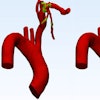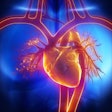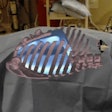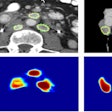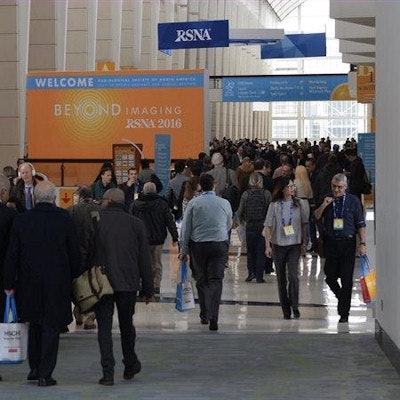
With McCormick Place in the rearview mirror, it's always useful to take a look back at radiology's showcase conference for signs of trends to come in medical imaging.
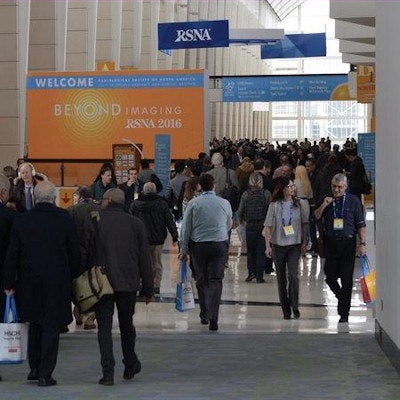
But clinical issues are the bread and butter of the RSNA show, and this year's meeting did not disappoint. From discussions of gadolinium retention in patients who have received MRI contrast to the rise of 3D printing, hot topics were plentiful.
The following is our analysis of the major trends at RSNA 2016. As always, we enjoyed bringing you our coverage of this year's show; be sure to check our RADCast @ RSNA for all of our reports.
1. A shifting political landscape creates uncertainty for radiology
Perhaps the biggest story at RSNA 2016 happened outside the halls of McCormick Place: the stunning victory of Donald Trump in the U.S. presidential election.
Opposition to the Obama administration's Affordable Care Act was a signature piece of Trump's campaign, and he and his Republican allies in Congress have made repealing the ACA an immediate priority (while promising to retain some elements of the law, such as the ban on insurance denials to patients with pre-existing conditions and the requirement that children can be insured under their parents' plans until age 26).
The problem is that no one really knows how the effects of repealing the ACA would ripple throughout the healthcare system.
Some prognosticators had said the passage of the ACA would lead to a surge in demand for basic screening tests such as mammography and bone densitometry, as more people were brought into the healthcare system. That never really materialized. Instead, radiology found itself victim to efforts to rein in healthcare costs that were entirely separate from the ACA, such as code bundling and reimbursement reductions implemented by the U.S. Centers for Medicare and Medicaid Services (CMS).
Will CMS continue to put pressure on reimbursement under the Trump administration? It's unclear to what extent Trump appointees will want to micromanage payment rates once they have accomplished the repeal of the ACA. But they will probably tilt CMS policy to one more favorable to healthcare providers. Rep. Tom Price (R-GA), Trump's nominee to head the U.S. Department of Health and Human Services, is an orthopedic surgeon widely seen as being friendly to physicians. Trump's pick to run Medicare, Seema Verma, is a consultant who designed a Medicaid plan in Indiana that required individuals to take greater responsibility -- and provide greater financial investment -- in their healthcare.
Also unclear is the fate of initiatives such as the Medicare Access and CHIP Reauthorization Act (MACRA), which has been the point of the spear in terms of the Obama administration's desire to shift Medicare from volume-oriented healthcare to value. The very structure of Medicare and Medicaid could even be radically redesigned if Republicans -- with their majorities in both houses of Congress -- choose to flex their legislative muscles.
Most likely, radiology will benefit to some extent if regulations seen as burdensome -- such as MACRA and the meaningful use program -- are relaxed. But absent a major restructuring, CMS will most likely maintain pressure on reimbursement, so don't expect a return to the heady days of the early 2000s, when capital equipment purchasing boomed and radiology utilization skyrocketed.
There could even be unintended consequences from a Trump administration that could negatively affect radiology in ways unseen. Only time will tell.
2. AI's growth portends rise of machine learning
Artificial intelligence (AI) technology was seemingly everywhere at McCormick Place, permeating the scientific program as well as the exhibit hall. Those who attended the scientific sessions and visited the posters and education exhibits were able to witness firsthand the rapid development of machine learning -- particularly deep learning -- for a wide range of radiology applications.
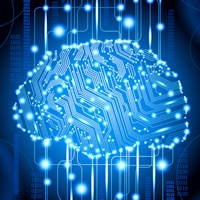
Researchers described how machine learning offers potential for enhancing image interpretation, such as in breast imaging for assessing breast cancer risk. It may also be able to, for example, segment and measure lesions, help reduce unnecessary breast biopsies, read chest x-rays, uncover biomarkers for rare diseases, detect osteoporosis on CT exams, find and label vertebrae on lumbar MRI, identify clinically significant prostate cancer, and help spot interstitial lung disease.
But that's not all. Many at the meeting believed machine learning may soon affect other areas of radiology, including billing, reporting, and clinical decision support. Thanks to improved efficiency provided by machine learning, radiologists may even gain more time to talk with clinicians and be a more visible member of the care team -- a very useful advantage as healthcare transitions to a value-based model.
Commercial activity is also building up at a frenetic pace. Advancements in machine learning were being showcased by a broad cross-section of vendors, such as large traditional imaging vendors, IBM and its Watson technology, a bevy of start-ups, and all sizes and types of companies in between.
While some fear that AI will eventually put radiologists out of a job, that apocalyptic vision now seems a lot further off in the future -- if it ever happens. RSNA 2016 showed that the focus is on making radiologists better and more efficient at their jobs, not replacing them.
3. The gadolinium retention debate rages
No other issue currently being debated by the radiology community may draw as much attention as the potential long-term effects of retained gadolinium from MRI contrast agents. RSNA 2016 attendees packed one large conference hall to hear panelists discuss the state of knowledge about gadolinium-based contrast agents (GBCAs) and how retained gadolinium might affect patients.
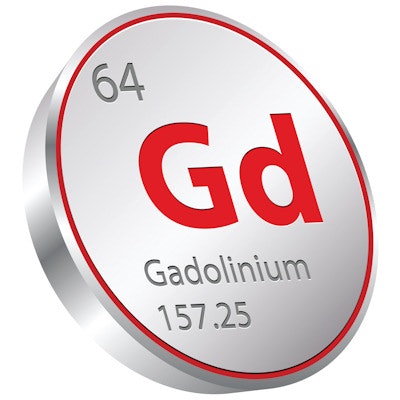
One of the panelists was Dr. Alexander Radbruch, a radiologist from Heidelberg University in Germany, who has reviewed several studies that detected heightened T1 signal intensities in the brains of patients exposed to multiple injections of GBCAs. His most recent study found that switching from a linear GBCA to a macrocyclic one reduced the level of residual signal intensity in patients who underwent multiple enhanced MRI scans with both types of agents.
"I get emails every day from patients who ask, 'Should I be afraid?' " he told the forum. "We have to make sure this is not getting out of control. But we also have to point out there is not a single image published with T1 hyperintensities for macrocyclics."
Dr. Robert McDonald, PhD, from the Mayo Clinic in Rochester, MN, co-authored a 2015 study in which autopsies of 13 patients found concentrations of gadolinium in neuronal tissue from four brain regions after as few as four doses of a GBCA.
"I am definitely on the side of thinking hopefully that this is a nonissue," McDonald said. "There are lots of potential consequences, but we have to balance that with the fact that we have given hundreds of millions of doses. If there were really a severe effect, we would have seen it by now."
He added that due diligence is important so clinicians "can say with a certain level of confidence that we cannot see [adverse] effects. That is the best we can do."
One RSNA 2016 attendee suggested that every report on an advanced MRI scan should include the name of the GBCA administered and the specific quantity. This will empower researchers to perform a "cogent retrospective analysis of what consequences there may be from those injections."
Another attendee took a somewhat tongue-in-cheek contrarian view and asked why clinicians assume gadolinium in the brain is a bad thing, when it may have a sort of "protective value."
"The answer to this is: I don't know," Radbruch replied. "It might be that it is beneficial, but to be very honest, as I look at the whole debate, there is nothing proven. But, if you ask me personally, I would prefer not to have it in my brain."
4. 3D printing is everywhere
3D printing is hotter than a pool of molten resin, judging from the popularity of hands-on workshops and courses on the topic at RSNA 2016.
This year's meeting featured three all-day hands-on 3D printing sessions, compared with just one last year, and Lakeside Learning Center in McCormick Place boasted a 3D printing exhibit three times the size of last year's -- all well-attended with double the participation of 2015, according to unverified reports.
 Left to right: 3D printing experts Dr. Adnan Sheikh from the University of Ottawa, Dr. Jane Matsumoto from the Mayo Clinic in Rochester, MN, and Dr. Leo Cheplev from the University of Ottawa. Matsumoto and Dr. Jonathan Morris (not pictured) organized the 3D printing area at RSNA 2016. Image courtesy of Dr. Adnan Sheikh.
Left to right: 3D printing experts Dr. Adnan Sheikh from the University of Ottawa, Dr. Jane Matsumoto from the Mayo Clinic in Rochester, MN, and Dr. Leo Cheplev from the University of Ottawa. Matsumoto and Dr. Jonathan Morris (not pictured) organized the 3D printing area at RSNA 2016. Image courtesy of Dr. Adnan Sheikh.There were also refresher courses and scientific sessions dedicated to the creation of 3D models for surgery and education. Companies throughout the technical exhibits touted the quality and rapid turnaround of the models they produce for centers that have not yet jumped into 3D printing for themselves. The word is out that 3D models are a boon for planning surgery, educating patients, and teaching new doctors how to perform surgery in a zero-risk environment.
"More and more people are getting into it and wanting to set up a lab," said Dr. Adnan Sheikh, a radiologist at the University of Ottawa in Canada, who ran one of the hands-on workshops. "The rooms are full."
The presentations have grown more sophisticated as well. Whereas in past years a scientific presentation might have consisted mainly of watching a 3D printing nozzle assembly sweep back and forth depositing new layers of plastic -- a process only slightly more exciting than watching paint dry -- this year's presenters had prepared detailed analyses of their work.
A story to be published on AuntMinnie.com later this week, for example, shows how a University of Pittsburgh team laid out the steps of a quality control program for the entire 3D printing process. And in a story you'll find here, Boston researchers took the time to learn the precise ways in which their models helped surgeons prepare for lung cancer surgery.
But the big news this year was the RSNA's establishment of a 3D printing special interest group (SIG) dedicated to advancing the art and science of 3D printing and helping radiology centers build their own labs. SIG membership is open to everyone doing 3D printing around the world, including nonradiologists, nonphysicians, and even commercial firms.
"We have also formed subcommittees for standardization so we can formulate the standards for 3D printing," Sheikh told AuntMinnie.com. "We can troubleshoot, and we can help anyone who wants to set up a 3D lab in their own facility [advising on] equipment and software. If you have a problem, you can post a question to this group and someone will answer."
5. Screening DBT is changing breast imaging practice
You say you want a revolution? Well, digital breast tomosynthesis (DBT) appears to be sparking one in breast imaging, transforming the way screening is practiced, according to research presented at RSNA 2016.
Not only does the technology make screening exams more efficient -- which then influences the volume and number of views in diagnostic mammograms -- but it also helps improve radiologists' confidence with subtle findings such as architectural distortions. An added bonus is that DBT appears to be effective in women of all ages.
In one study presented at the meeting, Dr. Reni Butler of Yale University and colleagues measured the volume of screening and diagnostic mammograms over three one-year intervals. They found that the number of screening mammograms increased by 17% and diagnostic mammograms decreased by 29%, suggesting that the screening exams were more effective. In addition, the percentage of screening patients receiving immediate results increased from 18% in the first year to 46% in the third, and the percentage of diagnostic patients imaged with only four routine views increased from 24% in the first year to 73% in the third.
These findings demonstrate that DBT is changing how breast cancer screening is practiced -- and this change will affect everything from patient scheduling to breast center staffing and even patient satisfaction, Butler said.
Screening DBT is also helping radiologists identify subtle manifestations of breast cancer, such as architectural distortions, and boosting their confidence in their interpretations. Dr. Elizabeth Dibble of Brown University and colleagues asked two breast radiologists and two breast imaging fellows to interpret a set of digital mammograms and a set of DBT exams, recording whether architectural distortions were present and their confidence in their interpretation.
Dibble's group found that DBT decreased interobserver variability and increased reader confidence in detecting architectural distortions -- good news for radiology practices and also for patients.
Finally, DBT appears to be an effective screening technology for women of all ages, even those younger than 50, who are susceptible to a higher rate of false positives. The finding offers more support for a protocol of regular screening not only in younger women but also those older than 74, according to another group of Yale researchers.
Dr. Liane Philpotts and colleagues found that DBT's sensitivity was higher in the 40-to-44 age group (86.4%) than in the 45-to-49 age group (82.8%). They also found that the technology's specificity and accuracy increased as women aged, ranging from 88.7% in the 40-to-44 group to 96% in the oldest groups, suggesting that DBT is an effective breast cancer screening tool for women of all ages.
The consensus at RSNA 2016 was clear: DBT's ability to streamline screening and diagnostic mammography, its ability to find subtle signs of cancer, and its effectiveness in women of all ages make it a catalyst for transforming breast imaging practice.
